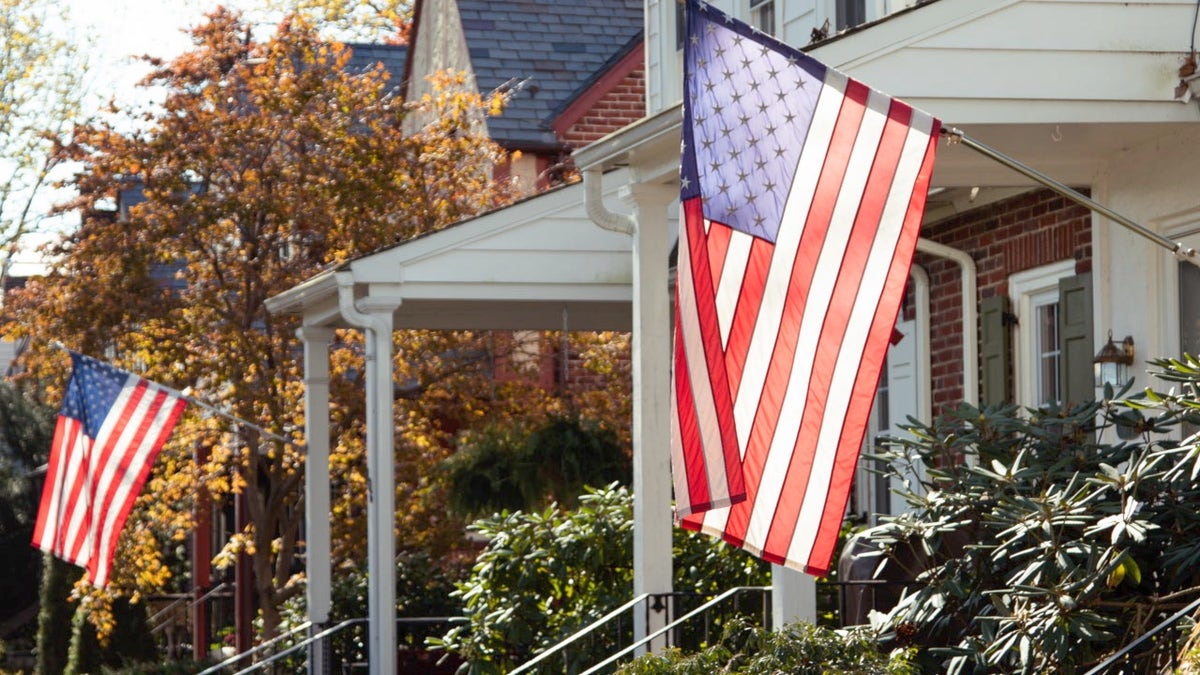NEWYou can now listen to Fox News articles!
Young people are demoralized and are turning to the promises of socialism. While socialism is entirely decoupled from reality, young Americans are frustrated, believing that the American Dream is out of reach. In a recent survey, almost a third of Millennials and nearly 40% of Gen Z said they believe they will never own a home.
While wrongly identifying capitalism as the culprit for the ills of cronyism and central planning, including monetary and fiscal policy that has increased the cost of living, their concerns are real and valid. Whereas in the past, there have been periods with high interest rates with reasonable home prices, and periods with low interest rates and high home prices, would-be homebuyers today are contending with both.
If a home is the physical embodiment of the American Dream, it shouldn’t feel out of reach. Here are some suggestions to once again make the American Dream attainable.
FAITH IN AMERICAN DREAM DWINDLES AMID SOUR ECONOMIC SENTIMENTS, POLL FINDS
Lower mortgage rates through more assumable loans
It is estimated that less than a quarter of mortgages in the US are assumable. Many homebuyers financed or refinanced their homes during the Fed’s 15-year low-interest rate bonanza and therefore, don’t want to sell their homes and give up their low mortgage interest rates. This has clogged up the housing market.
Furthermore, today’s mortgage rates, coupled with high housing costs, are making the homes that are available too costly.
The government should work with the banks to make more mortgages assumable (of course, making sure the assuming party is creditworthy, and perhaps limiting that to homes that will be primary residences).
While banks generate sizable fees from loan originations, right now, the clogged market is limiting their business anyway. If loan assumability came with a right of first refusal for the lending institution to refinance the remainder needed for the mortgage, it would be a win-win. Banks would increase originations and the blended rate would be lower for homebuyers.
Plus, taxpayers have helped the banks out a lot, to put it mildly, over the past few decades, so getting some concessions on their side is quite fair.
Create incentives for smaller footprint housing
One of the reasons that housing is so expensive is that we have had square footage creep. Homes today, on average, are more than double the size they were in the 1950s. Per US Census Bureau data, new construction homes averaged 983 square feet in the 1950s, 1,200 square feet in the 1960s, around 1,500 square feet in the 1970s and are between 2,200 and 2,300 square feet on average today, even though the household size has shrunk. Note that median data for the period was similar.
It’s a complicated matter. Why would a homebuilder choose to build a smaller home when they could make a bigger profit on a larger one for an incremental amount of extra work?
This is where tax incentives, both locally and federally, could help prompt builders to build smaller footprint housing that would also be more affordable, particularly for young people.
Fix balance sheets by solving the student loan burden
Even if a house is in range of a potential homebuyer’s earnings, if they are saddled with debt, making a home purchase becomes a non-starter.
The US government is the largest predatory lender in the country, saddling teenagers and young adults with tens of thousands of dollars in debt and delaying their ability to make investments, while enriching colleges and their administrators. Getting the government out of student lending and thereby making colleges and universities right-size education costs to the value the education provides will clean up young people’s personal balance sheets and help make homeownership more attainable.
You can read more of my thoughts on how to do that here.
Address rising property taxes and insurance
It’s one thing to be able to afford buying a house. It’s quite another thing to afford the ongoing carrying costs. Property taxes and insurance have become incredibly cumbersome. It is reported that, on average, taxes and insurance make up almost a third of single-family mortgage payments, and for 9% of single-family homeowners, taxes and insurance comprise more than half of the mortgage payment.
There should be an effort, even if undertaken at the local level, to dial back these costs, or fewer Americans will never be able to afford a house (not to mention the overall questionable moral framework for property taxes).
CLICK HERE FOR MORE FOX NEWS OPINION
Address corporations buying single family homes
This is an area that I wrote about extensively in my last bestselling book, You Will Own Nothing. Before 2010, there was effectively no institutional money buying single-family homes. But, in Q1 2025, nearly 27% of single-family homes purchased were bought by investors, with some portion of that being institutional buyers.
Many of the institutionally-backed companies convert single-family homes they purchase to rental properties, taking those dwellings out of the buyable supply and renting Americans back a shadow of the American Dream.
CLICK HERE TO GET THE FOX NEWS APP
While I hate central planning and prefer free markets, there has been nothing free market about the advantages that give these companies the ability to get cheap capital and go in and compete for single-family homes. Additional fees, taxes or limitations, at least until the market is normalized, could be a good way to level the playing field for average Americans.
The housing problem may be temporary, as baby boomers will eventually age out and sell their homes. However, it is still worthwhile to come up with solutions today, even if short-term, to make owning a home a realistic, attainable, goal for hardworking Americans.
Opinion News on Fox News
Read the full article .


